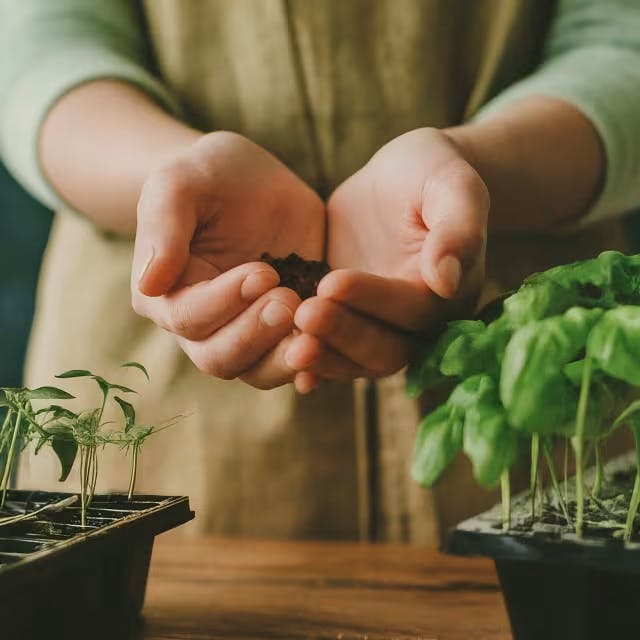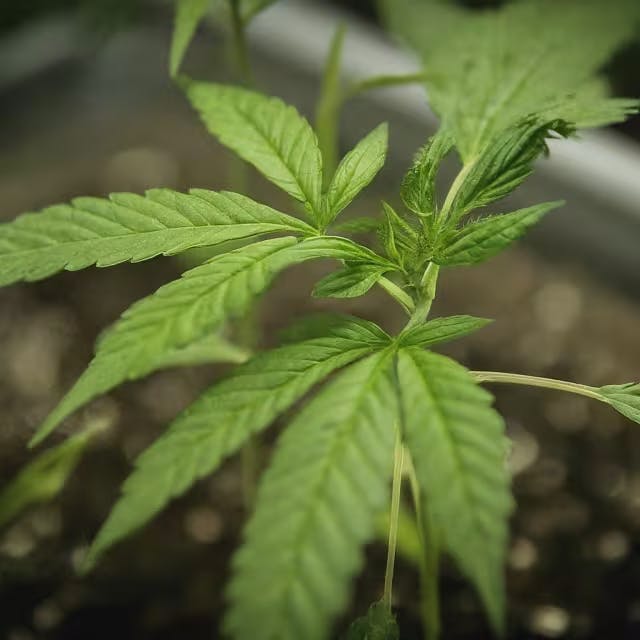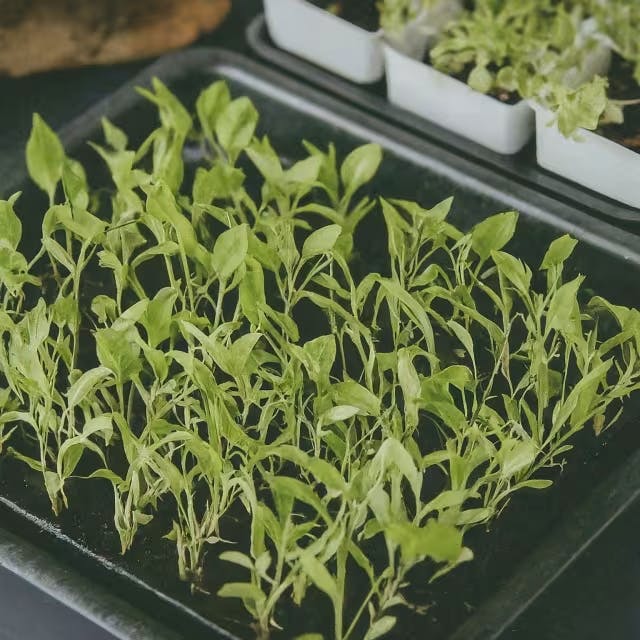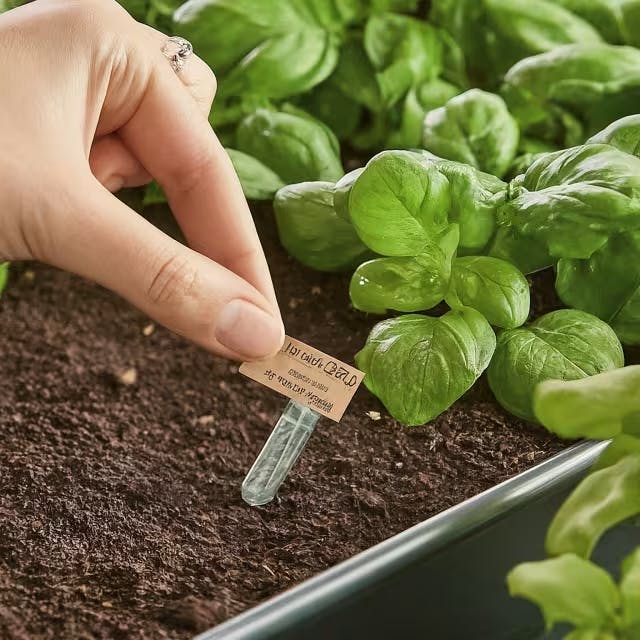Indoor Seed Starting Made Simple: A Beginner's Guide
Go4Turf
February 19, 2024

Starting your own seeds indoors isn't just a fun gardening project; it's a strategic choice that can lead to a more diverse, cost-effective, and resilient garden. This beginner's guide to indoor seed starting made simple will walk you through the benefits of choosing your own varieties beyond what's commonly found in nurseries, how to select the right seeds for indoor growing, and the essential equipment you'll need. Plus, with practical steps and tips for watering, lighting, and temperature control, you'll be on your way to a flourishing garden that stands up to the challenges of climate, disease, and pests.
Key Takeaways
Starting seeds indoors allows for a more diverse and cost-effective garden by enabling you to choose from a wider variety of plants than what is typically available in nurseries.
Selecting the right seeds for indoor growing involves considering the plant's adaptability to indoor environments and its ultimate transplant success outdoors.
Essential equipment for indoor seed starting includes containers, high-quality seed starting mix, grow lights, and a consistent heat source to ensure seed germination and growth.
Following a step-by-step guide to planting seeds indoors, which encompasses sowing seeds at the correct depth, maintaining optimal soil moisture, and providing adequate light, is crucial for successful germination and early plant development.
Proper watering, lighting, and temperature control are key to maximizing the growth and health of indoor-started plants, requiring regular attention and adjustments to meet the seedlings' changing needs.
Indoor seed starting not only prepares plants to withstand challenges like climate variations, diseases, and pests more effectively but also fosters a healthier, more resilient garden.
Why Start Seeds Indoors? A Comprehensive Overview
Starting seeds indoors is a gateway to cultivating a wider variety of plants than might be available at local nurseries or garden centers. Accessibility to different types of seeds allows for personalization and experimentation in your garden, leading to a unique and diverse gardening experience. By selecting the ideal location and containers, you set the stage for successful seedling growth. Notable is the advice to steer clear of window sills—the fluctuating temperatures can hamper seed germination and young plant development. Instead, utilizing individual containers or making your own eco-friendly newspaper pots can greatly benefit seedlings by minimizing root disturbance during the transplanting process.
Opting for a dedicated seed-starting mix is crucial as it's designed to be sterile and provide the right texture and nutrients needed for seeds to germinate effectively. Supplementing natural light with fluorescent lights can ensure your seedlings receive the consistent light levels they need to thrive.
Before moving them outdoors, seedlings must undergo a process called "hardening off". This gradually acclimates them to outdoor conditions, reducing shock and improving their chances of survival and growth. Following the right steps in seed starting and transplanting practices is significant for the health and productivity of your garden plants. For more in-depth guidance on nurturing your seedlings, consider exploring options for custom potting mixes, such as creating your own with peat moss, vermiculite, and compost, which can enhance your gardening practice and contribute to more robust plant growth.
For additional insights into starting seeds indoors and ensuring their healthy transition outdoors, the University of Minnesota Extension offers valuable resources.

Choosing the Right Seeds for Indoor Growing
Selecting the right seeds is the first vital step in your indoor gardening journey. Opt for vegetables and herbs that are known for their success indoors, such as lettuce, spinach, herbs, and microgreens. These not only thrive in limited light conditions but also mature quickly, offering fast rewards.
When considering flowers, small varieties like pansies or African violets can add a splash of color to your indoor garden. For those eager to dive into the process of creating their seed-starting mix, learning how to blend peat moss, vermiculite, and compost can be both rewarding and sustainable. Dive into the art of making your own seed-starting and potting mix with our detailed walkthrough here.
Not forgetting sustainability, another intriguing aspect of indoor seed starting involves the containers. Instead of purchasing new pots, why not try making biodegradable newspaper pots? They are not only eco-friendly but also ensure a smooth transplanting process without disturbing the roots. Learn how to easily craft these recycled pots here.
Remember, matching your chosen seeds to your indoor light conditions is crucial for their growth. Insufficient light can hinder plant development, leading to weak and leggy seedlings. Consider supplementing natural light with grow lights if your home does not receive adequate sunlight. For more insights on the significance of light for indoor plants and how to ensure they receive just the right amount, visit this expert guide.

Essential Equipment for Successful Indoor Seed Starting
Starting seeds indoors is an exciting journey, but having the right equipment is key to your success. Here's a simple list of what you'll need:
Seed Trays: These are essential for organizing and growing multiple seeds. You have options like peat pots, plastic trays, or you can get creative with eco-friendly newspaper pots, which add a sustainable touch to your gardening.
Light Source: Seedlings crave light, and without enough of it, they become leggy and weak. A grow light or a sunny south-facing window can prevent this common issue.
Potting Mix: A good quality seed starting mix is crucial for the healthy growth of seedlings. For gardeners looking to mix their own, DIY seed starting mixes can be a cost-effective and rewarding approach.
Watering Can: Gentle watering is key. A small watering can with a fine rose will ensure that the soil stays moist without dislodging or drowning the seeds.
Labels and Markers: Don't rely on memory alone. Label each pot with the plant's name and sowing date to track their progress and keep varieties organized.
With these basic tools, you're well on your way to growing healthy plants from seed. Remember, patience and attention to your plants' needs go a long way. For more gardening tips, especially on nurturing your seedlings, check out how to transform your black thumb into a green thumb.

Step-by-Step Guide to Planting Your Seeds Indoors
Starting seeds indoors isn't just a great way to jumpstart your garden—it's also a fun and rewarding hobby. Here's how to do it right:
Choose the Right Seeds: Begin with seeds that are known to be easy to grow indoors, such as tomatoes, beans, and leafy greens. For more on selecting the best seeds, check out this insightful guide.
Use a Suitable Growing Medium: Opt for a soilless mix specifically designed for seed starting. This ensures good drainage and aeration, crucial for seedling health.
Sow Your Seeds: Plant your seeds according to the packet's instructions, generally at a depth twice the size of the seed. Remember, precision now pays off later.
Maintain Moisture and Warmth: Seeds need a consistent moisture level and warmth to germinate. Consider a self-watering system to simplify the process.
Let There Be Light: Once your seeds have sprouted, they'll require plenty of light. A sunny windowsill or a grow light can provide this.
Thin Seedlings: When seedlings start competing for light, it's time to thin them. Keep the strongest, and snip the rest.
Harden Off: Before transplanting outdoors, acclimate your seedlings by gradually introducing them to outdoor conditions over a week.
Transplant: After the last frost, move your plants outdoors. This might involve direct planting into the ground or potting them up for patio gardens.
For those with limited space, growing microgreens might be an attractive alternative. This can be easily done on a windowsill or kitchen counter, providing not just the joy of gardening but also nutritious greens within reach.
Remember, indoor seed starting is not just about getting a head start on the growing season; it's also an opportunity to learn and watch life unfold from the tiniest of seeds. Happy gardening!
Maximizing Growth: Tips for Watering, Lighting, and Temperature Control
For thriving seedlings, understanding the trifecta of watering, lighting, and temperature control plays a pivotal role.
Watering your seedlings carefully ensures they receive just the right amount of moisture. Overwatering can lead to root rot, while underwatering can stress plants, stunting their growth. A simple touch test—feeling the soil before watering—can guide you. For detailed insights on ensuring your plants' health and growth, consider exploring tips on mastering sunlight, water, nutrients, and more.
Lighting is more than just exposure; it's about providing the right kind. Seedlings need ample light to grow strong and healthy. Poor lighting often leads to leggy, weak plants. While natural light is best, not all setups can achieve this. Fortunately, supplemental lighting with fluorescent or LED lights can mimic natural sunlight, catering to your plants' needs. Adjust the proximity of lights based on plant growth and observe how seedlings respond. Learn more about how light influences plant photosynthesis, stem length, and more.
Temperature control is crucial since extreme temperatures can hamper growth. Most seeds germinate efficiently at temperatures between 68°F and 86°F. Once seedlings emerge, a slightly cooler range promotes sturdier growth. To manage temperature, place seedlings away from drafty windows and use heating mats if necessary. Also, consider the role of humidity in plant care, balancing it to prevent issues like mold or mildew.
These essentials of watering, lighting, and temperature management are foundational to indoor gardening success. With patience and observation, you'll learn the specific needs of your plants, leading to a rewarding indoor garden that thrives year-round. In summary, Indoor Seed Starting Made Simple: A Beginner's Guide empowers gardening enthusiasts with the knowledge and tools required to embark on a rewarding journey of growing plants from seeds within their homes. By carefully selecting suitable seeds, utilizing the right equipment, and adhering to optimal watering, lighting, and temperature guidelines, anyone can nurture seedlings into thriving plants. This guide not only simplifies the indoor seed starting process but also opens the door to cultivating a diverse and flourishing garden, regardless of the outdoor climate.
Frequently Asked Questions
What are the best seeds to start indoors for successful growth?
For successful indoor growth, start with vegetables and herbs like lettuce, spinach, and microgreens, as well as flowers such as pansies or African violets. These selections thrive under limited light conditions, mature quickly, and add variety to your indoor garden. Additionally, using a soilless seed-starting mix ensures proper drainage and aeration, vital for healthy seedling development.
How can you make your own eco-friendly pots for seed starting?
To create your own eco-friendly pots for seed starting, consider making biodegradable newspaper pots. This not only reduces waste but also allows for easy transplanting without disturbing the roots. Simply roll strips of newspaper around a form, such as a can, fold the ends to secure the base, and remove the form to finalize the pot. For seedlings, using a dedicated seed-starting mix is crucial, as it provides the sterile, nutrient-rich environment needed for effective germination.
Why should you avoid using window sills for seed germination and what are the alternatives?
Avoiding window sills for seed germination is advisable due to the fluctuating temperatures, which can hinder seed and young plant development. Instead, consider using individual containers, including eco-friendly newspaper pots, with a dedicated seed-starting mix that offers the right texture and nutrients. Additionally, supplementing natural light with fluorescent lights can provide consistent light levels, crucial for seedling growth. This setup, paired with proper hardening off before transplanting outdoors, improves the chances of a successful and productive garden.
What is the proper way to harden off seedlings before moving them outdoors?
To harden off seedlings before moving them outdoors, gradually introduce them to outdoor conditions over a week. Begin by placing them outside in a sheltered, partially shaded area for a few hours each day, gradually increasing their exposure to sun and wind. Ensure to bring them back indoors or protect them if late frosts are forecasted. This process acclimates the seedlings to the natural environment, reducing transplant shock and improving survival rates.
How do you create an ideal seed-starting mix?
To create an ideal seed-starting mix, blend peat moss, vermiculite, and compost in equal parts. This mixture ensures a sterile environment with proper drainage, aeration, and nutrient content, which is crucial for effective seed germination. Avoid using soil directly from the garden as it may contain pathogens harmful to young seedlings.
What are the essential tools and supplies needed for starting seeds indoors?
To start seeds indoors successfully, you'll need:
Seed Trays or Containers: Choose from peat pots, plastic trays, or eco-friendly newspaper pots.
Light Source: Ensure adequate light with a grow light or a sunny window.
Potting Mix: Use a quality seed starting mix or create your own mix.
Watering Can: A fine rose attachment helps to water gently.
Labels and Markers: To track the growth and variety of your seeds.
With these essential tools and mindful attention to your seedlings' needs, you'll set the stage for a thriving garden.